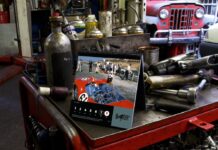During the 1970s, Formula 1 cars required skill and natural speed to handle them since they were real cars, not computers, and drivers had to change gear manually and raced without launch or traction control; it was down to skill alone and every weekend they took their cars to the very limit.

Many drivers from that era are remembered for their results but one of the finest and most naturally gifted was a modest Frenchman who raced for the fun of it; Jacques Laffite. He was rightly admired by his peers but his grand prix record is modest due in no small part for the fact he drove for a French team with an autocratic owner, Guy Ligier. Guy had made a fortune through his construction company and had hoped to become a grand prix driver until he discovered it was not as simple as he thought. Instead, he joined forces with Automobiles Martini to became an automobile manufacturer, initially launching a road car before constructing endurance GT prototypes prior to Ligier creating a grand prix team in 1976.
Laffite’s association with Ligier began when he raced its sports prototypes at Le Mans in 1972. However, his twelve-year Formula 1 career began in 1974 when he signed with Frank Williams to drive his Iso-Marlboro (later Williams) cars. Over the course two seasons the cars rarely finished a race; second at the Nurburgring in 1975 was the best result. Jacques also contested the European Formula 2 championship, finishing third in 1974 and winning the title for Automobiles Martini in 1975. He left Williams in 1976 to drive for Ligier. The team now had the support of the talented designer Gerard Ducarouge who moved from the team’s engine supplier, Matra, where his task was to assist Ligier create the highly promising JS5 that was powered by a 500bhp Matra V12 engine. Jacques proved quick in testing but reliability issues saw him finish fourth in the championship with one second place and one pole position at Monza being his best results. The JS7 was modified to become the JS7 and the teams first victory was achieved at the 1977 Swedish grand prix. A few podium places were the best the team could manage during 1978 so Guy Ligier made the decision to replace the wonderful Matra V12, whose screaming engine note had to be heard to be believed at its maximum 11,800 revs, with the inevitable Cosworth V8 DFV. The subsequent JS11 was a brilliant design and the 1979 season seemed set to be the year Jacques would secure a deserved championship title, with victories at the first two grand prix. Sadly, that would be his only two wins as luck, poor reliability and an unnecessary battle with his team-mate Patrick Depailler, meant he dropped points to finish fourth at the end of the season. His cause was not helped by Guy Ligier who interfered with Ducarouge’s design, claiming the side-pods of the JS11 were at fault and destroying them. The new side-pods made the car slower but Jacques was fourth again in 1980 and repeated the result in 1981 when Ligier reverted to the Matra V12. Laffite won two races and a number of podiums to finish fourth that year but after an unsuccessful campaign in 1982, Jacques returned to the Williams team for two more years, again with little success, prior to rejoining Ligier who had secured the use of Renault turbo engines. The car showed some promise but during the British grand prix in 1986, Jacques had to swerve to avoid an accident but in the process crashed heavily into an earth bank, breaking both ankles and suffering internal injuries that took several months to heal. It marked the end of his Formula 1 career as he continued to race in the DTM series, Le Mans and GT3 prior to accepting an offer to commentate for a French television network.
The photograph shows Jacques driving the Ligier JS5 during the 1976 British grand prix where he became a victim of a first corner crash that eliminated several cars and led to later disqualifications once the rule book had been consulted. Sadly, Jacques was one who had restarted the race without completing one full lap so he was harshly disqualified after the race. The black wheel-marks on the Ligier sidepods bears testimony to the initial accident.
From ‘Moments in Motorsport’ by Trevor Legate.










